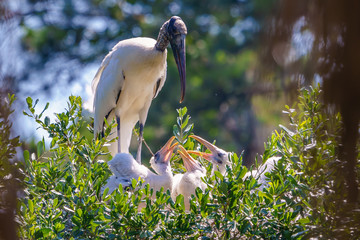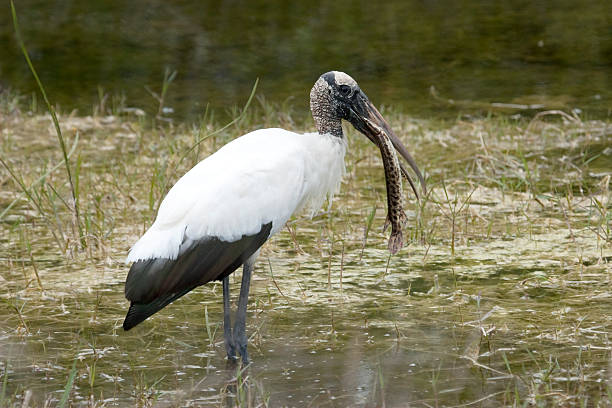Table of Contents
Scientific Classification
| Kingdom | Animalia |
| Phylum | Chordata |
| Class | Aves |
| Order | Ciconiiformes |
| Family | Ciconiidae |
| Genus | Mycteria |
| Species | Mycteria americana |
| Scientific Name | Mycteria americana |
Description
The wood stork is a large wading bird known for its striking appearance. It features white feathers contrasted by black wings and has a long, thick bill that curves downward. Its head is dark gray and scaly, lacking feathers. With long, sturdy legs, it is well-adapted for wading in shallow waters. Adult wood storks usually measure between 33 to 45 inches tall, with a wingspan that can extend up to 5.5 feet. Their distinctive appearance and elegant flight make them a fascinating sight in wetland areas.
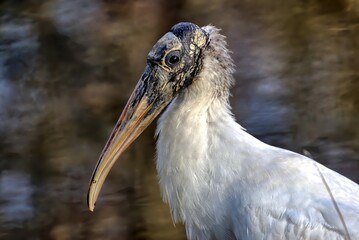
Distribution
Wood storks primarily inhabit the southeastern United States, particularly in states like Florida, Georgia, and South Carolina. They also reside in parts of Central and South America, including Mexico, Brazil, and Argentina. Thanks to conservation efforts, their population in the U.S. has increased, allowing them to extend their range slightly further north.
Habitat
Wood storks flourish in freshwater and brackish wetlands, such as swamps, marshes, and mangroves. They prefer locations with fluctuating water levels, which create excellent feeding opportunities by concentrating fish and other aquatic prey. During the breeding season, they nest in large colonies in trees near water. They frequently coexist with other wading birds, including herons and egrets.
Diet
Wood storks are carnivorous birds that primarily feed on fish, amphibians, crustaceans, and aquatic insects. They employ a unique feeding technique known as “tactile foraging.” By wading through shallow waters with their beaks submerged in the mud, they can detect movement. When they sense something, they quickly snap their beaks shut. This method enhances their ability to catch prey, particularly in murky or dimly lit waters.
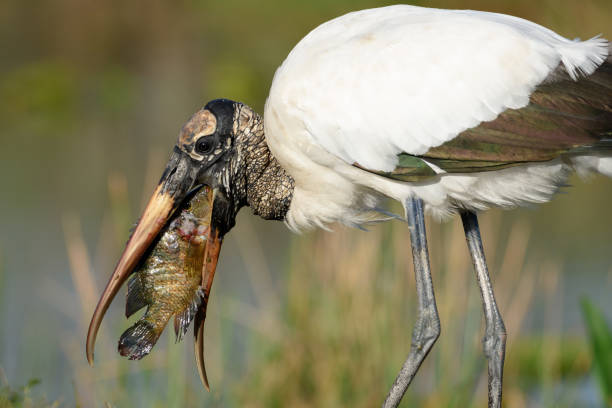
Behavior
Wood storks are social birds, often seen foraging in groups. They are known for being quiet. They hardly make sounds, except when mating or caring for chicks. Unlike many stork species, they use thermal updrafts to fly high. This helps them save energy as they travel between feeding and nesting sites. Their graceful flight and coordinated movements create a stunning view in the wild.
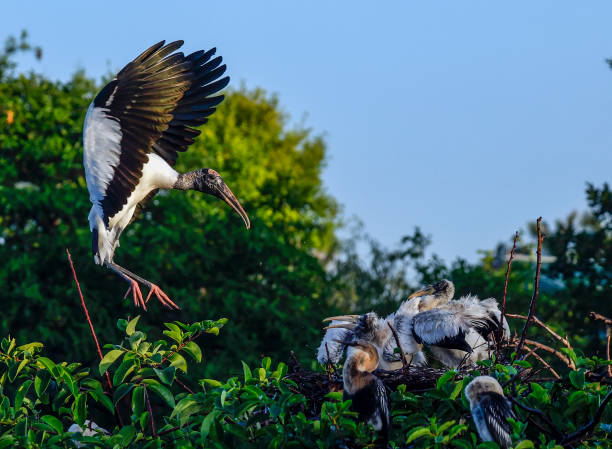
Lifespan
Wood storks live for about 11 to 18 years in the wild. Some can even reach over 20 years. Their longevity largely depends on environmental conditions, predation risks, and food availability.
Reproduction and Lifecycle
Wood storks are known to be monogamous during the breeding season, forming strong pair bonds. The timing of their breeding season is influenced by water levels, typically occurring from December to March in the U.S. The female lays between 2 to 5 eggs in a large stick nest, often situated in trees above water. Both parents share the responsibility of incubating the eggs for approximately 30 days. After hatching, the chicks depend significantly on their parents for food and protection.
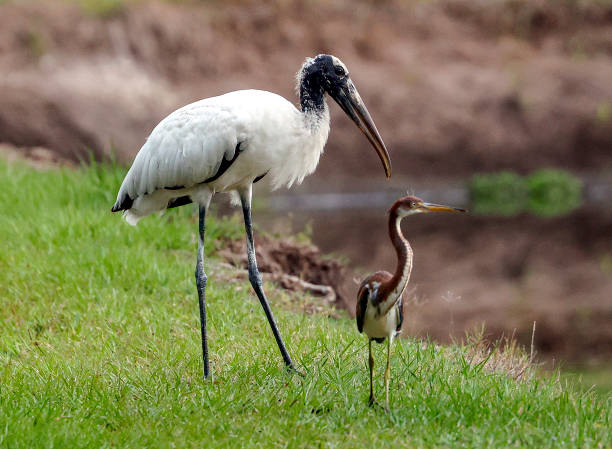
Predators
Adult wood storks face few natural predators. Raccoons, opossums, and birds of prey like hawks and eagles threaten their eggs and young. In some areas, alligators help protect wood stork nests. They do this by scaring off tree-climbing predators.
Adaptations
Wood storks have several remarkable adaptations that aid in their survival:
Specialized Beak: Their curved, sensitive beak helps them quickly find and catch prey in shallow waters.
Efficient Flight: Their big wings help them catch thermal air currents. This makes long trips easier and saves energy.
Regulating Body Temperature: In hot places, wood storks use urohidrosis. They defecate on their legs to cool down by evaporative cooling.
Colonial Nesting: Nesting in big groups keeps predators away and boosts breeding success.
Conservation Status
The wood stork was once listed as endangered in the United States. However, threats such as habitat destruction, climate change, and water management issues continue to impact their population. Protecting wetland habitats and managing water levels are essential for their long-term survival.
The wood stork is an impressive and important species in wetland ecosystems. Its presence indicates that the wetland is healthy and flourishing. By safeguarding these beautiful birds, we can ensure they are around for future generations. It is vital that we protect wetlands and maintain our conservation efforts.
